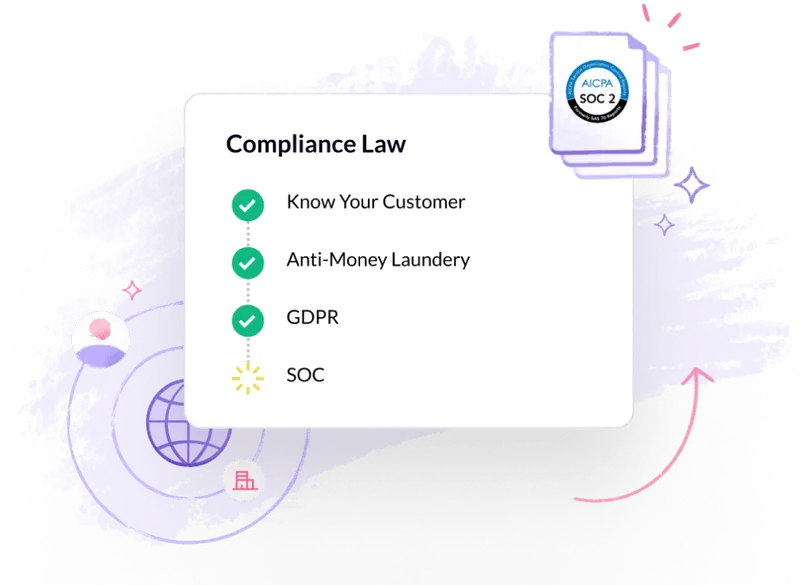28% of the banks use OCR software to automate data extraction and make it searchable. Not just banks but several financial organizations employ OCR technology to streamline their processes.
OCR is widely popular in finance as it helps manage paperwork quickly and accurately. The application of OCR in finance is sometimes referred to as OCR finance. The many uses of OCR technology ensure higher data accuracy compared to manual data entry. OCR automates pulling data from financial documents like invoices, receipts, and contracts, thus enabling OCR accounting to process these critical documents.
Understanding how OCR works in finance
OCR has several uses in finance. For starters, OCR finance automates the extraction and processing of data from financial documents. The automation also streamlines data entry and verification processes in accounts payable and receivable. For bank statements, OCR converts scanned documents into digital formats like Excel or CSV.
The technology is utilized to automate check processing within internal payment workflows. Banks use OCR to speed up the processing of customer documents necessary for KYC verifications. Additionally, it aids in detecting discrepancies in financial documents during audits and expense reporting, contributing to fraud detection.
Optical Character Recognition is the technology that converts scanned documents and images into editable and searchable data.
Here’s how OCR typically works:
- This process begins with data capture via scanning or photographing.
- Next, OCR accounting software performs scanning and data extraction. It scans invoices, receipts, and other documents like account statements. The software identifies and extracts text along with other elements like graphics and tables. OCR extracts specific details like account details, transaction IDs, dates, and other relevant information in the financial documents.
- After that comes the character recognition phase. Here, the OCR software analyzes the shapes and lines of extracted characters to convert them into digital text. It uses algorithms to match these characters against a database of known fonts and handwriting styles. This ensures that even if the text is slightly distorted or in a different style, it can still be recognized accurately.
- The second-last step is data integration and classification. OCR integrates and classifies the data after digitizing it. It sorts all the information into categories like dates, names, amounts, and more as suited to the financial structure. This structured data is crucial for financial analysis and decision-making.
- Finally, the output phase delivers this organized digital data into financial systems. It can then be fed into databases, accounting software, or compliance tracking systems. This seamless integration helps businesses process transactions faster, reduce errors, and maintain detailed, searchable records for financial data.
By streamlining data handling, OCR finance speeds up financial operations, reduces costs, and enhances data security.
Benefits of using OCR in finance
Optical Character Recognition has many benefits in the finance industry. OCR turns printed and handwritten documents into digital formats. OCR accounting helps extract data, process high volumes of paperwork, and make financial management more efficient with accurate results. Below is how OCR benefits finance across various dimensions.
Improve efficiency
OCR automation is the most significant benefit of the tool. It automates the data entry process for documents like invoices, receipts, and bank statements. This means less manual sorting and data input, accelerating all related financial activities. It minimizes the time and resources needed for accounting, budgeting, and financial reporting.
With OCR, companies can quickly access and retrieve specific financial documents, critical during audits or when checking compliance. Automating data extraction cuts down on the backlog of unprocessed documents. It also frees up staff to focus on vital tasks.
Enhance customer experience
Customers expect fast and efficient services, and OCR finance helps meet these expectations in several ways:
- Faster loan processing due to quick document verification improves customer satisfaction.
- Immediate data access allows for quicker customer service responses.
- Enhanced data handling reduces errors in customer accounts, leading to fewer complaints and issues.
Reduce time and cost
OCR significantly reduces the resources required for data processing, transforming tasks that used to take hours into mere minutes.
It also minimizes the need for physical storage by digitizing and electronically storing documents. Needing fewer people for data entry also saves money, freeing up funds for other strategic areas.
Improve data accuracy
OCR finance minimizes human error in data entry. It makes sure the financial data captured is accurate and trustworthy. Plus, now there is AI-powered OCR in document processing that has further improved things.
Better accuracy is paramount for regulatory compliance and being ready for audits, helping to avoid heavy fines and legal problems. Accurate data is crucial for making informed decisions because it gives a solid foundation for financial analysis and predictions.
Use cases of OCR in the finance industry
OCR finance is revolutionizing the finance industry. It plays a pivotal role in enhancing operational processes. Let’s look at how OCR is applicable across different finance functions.
Customer onboarding
OCR speeds up the customer onboarding process. It quickly scans and pulls data from identity documents like passports and driver’s licenses. This is known as ID OCR. It ensures data is accurate and reduces waiting times. The faster process makes customers happier and helps implement KYC (Know Your Customer) regulations more easily.
Invoice processing
- OCR automates data extraction from invoices, leading to quicker processing times.
- It reduces errors that typically arise during manual data entry.
- This automation allows financial departments to handle higher volumes of invoices with greater accuracy.
Bank statement analysis
OCR makes analyzing bank statements easier by turning them into digital formats for easy access. Financial analysts use OCR to collect and compare data from different periods and accounts. This helps them better understand financial health and make smarter decisions.
Loan approval/credit card processing
- OCR accelerates the verification of financial documents required for loan or credit card approvals.
- It ensures that all data is captured and processed quickly, reducing approval times and improving customer satisfaction.
- Accurate data capture helps in assessing creditworthiness more reliably.
Fraud prevention
- OCR ensures that the data used in transactions is accurate and unaltered, helping detect discrepancies in financial documents.
- Additionally, the technology helps spot anomalies in document texts or figures. In this way, OCR also helps in the early detection of potential fraud, safeguarding both- the institution and its customers.

Choose the best OCR engine for your documentation purposes
Choosing the right OCR services is imperative for your business. The right OCR engine will efficiently turn your paper documents into machine-readable text. It will improve data accuracy and reduce your processing time. This technology is especially valuable for customer onboarding, fraud detection, and compliance tracking, where speed and precision are vital.
Hyperverge’s OCR solutions stand out as an ideal choice for financial institutions. Our advanced algorithms provide high accuracy in recognizing text from various document types, whether printed or handwritten. This capability ensures that critical financial information is digitized correctly, supporting effective decision-making and streamlined operations.
Here’s why Hyperverge’s OCR will prove suitable for your business:
- It delivers fast processing speeds, enabling real-time financial data extraction and analysis.
- The OCR technology is adaptable and capable of handling multiple formats and document types, which is essential for the diverse needs of financial services.
- Our commitment to security means that your data remains protected, a must in the finance sector where data sensitivity is high.
- Our OCR offers a robust solution for financial institutions aiming to enhance operational efficiency and reduce overhead costs. It effectively simplifies document management and strengthens compliance and fraud prevention measures.
Ready to transform your document processes with top-tier OCR technology? Explore Hyperverge’s OCR solutions for more information, or sign up to start optimizing your documentation workflow now.

 US
US
 IN
IN









